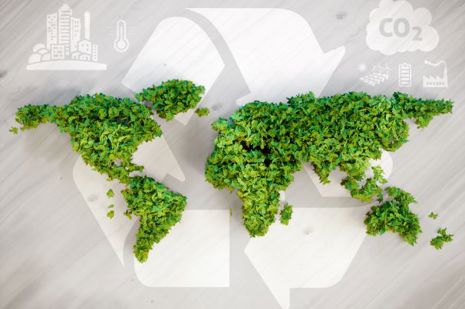
A consistent documentation standard for increased transparency of temperature-controlled reusable air freight containers
Due to the increased public awareness of climate change, the topic of CO2 emissions has been gaining importance. The associated challenges also come into focus in the sector of temperature-controlled logistics for stakeholders such as pharmaceutical shippers, airlines and forwarders. When selecting suitable thermal packaging, the quantity of CO2 emitted during use, production and disposal will become a relevant decision-making criterion in the future. Within the industry, there are no documentation standards to date which enable a comparison between the various types of thermal packaging.
As part of its sustainability strategy in 2021, the manufacturer of high-tech thermal transport solutions va-Q-tec designed a detailed carbon footprint for its thermal containers according to the Greenhouse Gas (GHG) Protocol. The standards set in this accounting process for the transparent calculation of CO2 emissions within the sectors lead to the question of comparability with other transport solutions. Therefore, va-Q-tec developed an approach in collaboration with independent experts.
Factors influencing the carbon footprint
When holistically accounting for CO2 emissions according to the GHG Protocol, it becomes clear that for thermal air freight containers, the largest proportion is emitted during the use phase. However, there are several variables during the manufacturing and disposal phases which must be considered in order to compile a full account. Otherwise, the amount of carbon dioxide emitted during the use phase of an air freight container is primarily dependent on whether active or passive solutions are used.
In order to calculate emissions for a concrete transport route, the variable part of the CO2 emissions must be considered above all. For this purpose, the following formula is used for the calculation:
CO2 emissions (per lane) = Distance (in km) * CO2 emissions (per km)
The emission factor per km is determined individually by independent partners for each container type, considering the different temperature ranges, as the tare weight can vary significantly according to the container technology and construction used. It takes verified average values into account, which are measured by specialized agencies based on audited calculations from international databanks and are regularly updated.
Summary: Transparent CO2 accounting through comparable reference values
The reason for the transparent account for CO2 emissions is that the GHG Protocol is the only neutral approach which provides the necessary opportunity for generalizable transparency. Accounting and monitoring by an external partner play an important role in the establishment of credibility. The focus of va-Q-tec’s efforts was on the development of useful reference values, such as a comparable carbon footprint, which provides clarity in the calculation of variable emissions of a concrete shipment. These reference values allow transparent comparison, considering all important factors such as manufacturing and disposal, temperature ranges, weight of container, kilometers transported and mode of transport.
Joana Kraus, Content & PR / Communications Manager